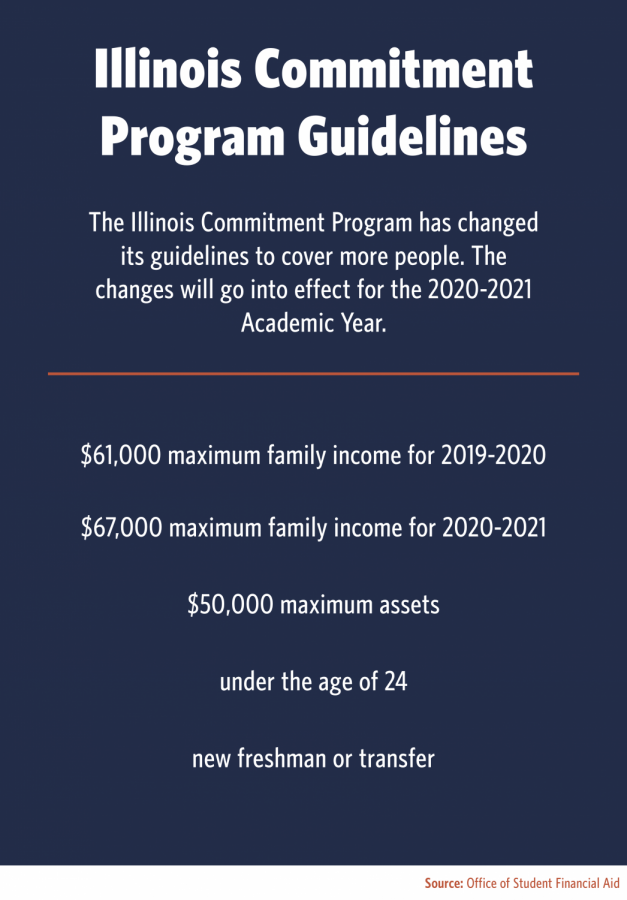Illinois Commitment raises income level requirement
Jan 27, 2020
The Illinois Commitment Program plans to raise the income level for qualification from $61,000 to $67,100 for the 2020-2021 academic year. This program covers some, but not all, of a student’s costs at the University using both federal and state grant funds.
The guidelines for qualifying for the program include a household income below $67,100 with less than $50,000 in assets and require a student is an Illinois high school graduate who is an incoming freshman or transfer student who is enrolled full time at the University. Applicants must also be under the age of 24.
“The program sounds like a great idea to help those who are less fortunate,” said Truman Silberg, freshman in Engineering.
According to the Office of Student Financial Aid website, up to eight semesters of tuition and fees are covered for freshmen and up to six semesters of tuition and fees are covered for transfer students. However, room and board, summer or winter classes, study abroad programs and some other exceptions are not paid for by this program.
The program began in the 2019-2020 year and has seen a 10% increase from its original income requirement of $61,000.
Get The Daily Illini in your inbox!
“(Illinois Commitment) benefits students because it helps bring students from different backgrounds together, which improves the overall learning environment,” said Kevin Pitts, vice provost for undergraduate education. “It helps the state of Illinois because we are helping to train and educate Illinois residents from all income levels.”
The increase in the income requirement was determined by the University Board of Trustees as well as Governor J.B. Pritzker. Pritzker spoke about the agreement during a conference about the License to Work Act.
“You all know that a central priority for me in this office is making college more affordable for those who can least afford it, and this is especially true of our state’s universities and community colleges,” Pritzker said. “That means now, more than half of the households in this state will qualify for free tuition.”
The increase in the number of people the program covers coincides with the first increase in University tuition rates after a five-year freeze, and costs of the program may factor into this change. While some new students have their tuition covered, other incoming students will pay more in the new academic year.
“It’s good that the University is getting us exposed to a wider amount of classes and intellectual opportunities, but focusing on one thing might benefit us,” Silberg said.
Sam Guagliardo, freshman in Engineering, mentioned another reason for the new tuition increase, referencing a pay increase for University President Tim Killeen.
“The tuition funding is used for a lot of good things, but the increase of the president’s salary by 40% to $800,000 seems excessive,” Guagliardo said.
This 10% increase in the program’s funding represents less than a 3% increase in the overall financial aid budget for the University, but it may still play a part in the new tuition increase.
“Once the program is fully phased in, it will cost an additional $4 million a year,” Pitts said. “To put that into perspective, the University already invests roughly $150 million in student financial aid every year. The additional funding will be paid for by a combination of gift funds, tuition funds and hopefully additional financial support from the state of Illinois.”






